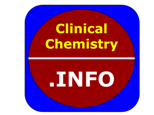Clin Chem Lab Med. 2025 Jun 4. doi: 10.1515/cclm-2025-0238. Online ahead of print.
ABSTRACT
OBJECTIVES: Type 1 diabetes (T1D) is a chronic autoimmune disease causing β-cell destruction, hyperglycemia, and lifelong insulin dependence that can lead to severe complications like ketoacidosis, with a 1 % mortality rate in newly diagnosed patients. A significant breakthrough in T1D research was the identification of a long presymptomatic phase, characterized by disease-specific autoantibodies despite the absence of clinical symptoms. The aim of our study was to compare the results of different commercial assays for detecting anti-GAD, -IA-2, -ZnT8 antibodies and IAA to evaluate the state of the art of the current methods in a routine clinical laboratory setting.
METHODS: We have analyzed 87 consecutive samples from patients screened for T1D and evaluated the agreement among four commercial assays (two chemiluminescence immunoassays and two immunoenzymatic assays) for detecting anti-GAD, -IA-2, -ZnT8 antibodies and IAA.
RESULTS: The agreement among methods for all disease-specific antibodies measured by Cohen’s kappa ranged from 0.514 to 1.000. The highest agreement was found for anti-GAD antibodies (0.923-0.963) and the lowest agreement for IAA (0.514-0.550). The average agreement was 0.796 (SD: 0.170) and it was statistically significant at p<0.001 for all comparisons.
CONCLUSIONS: Even though some differences exist among methods, our findings provide valuable insights into the use of new technologies for T1D diagnosis, demonstrating an overall consistent agreement among assays tested for all antibodies but IAA.
PMID:40460837 | DOI:10.1515/cclm-2025-0238
